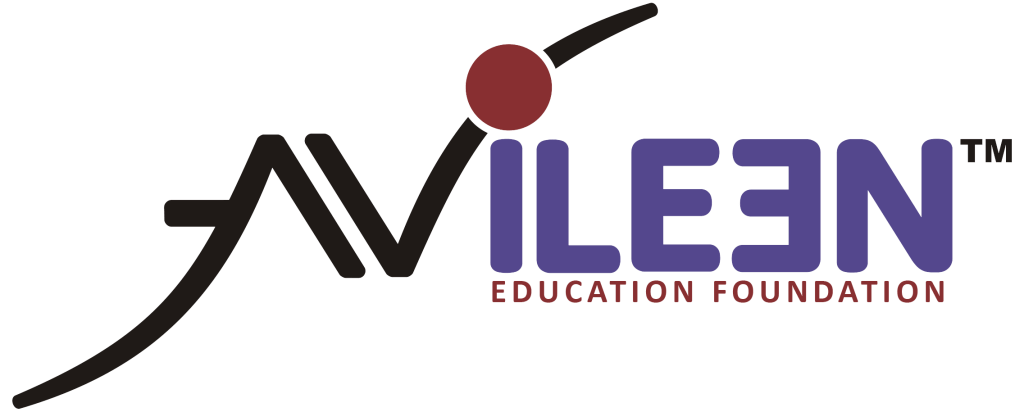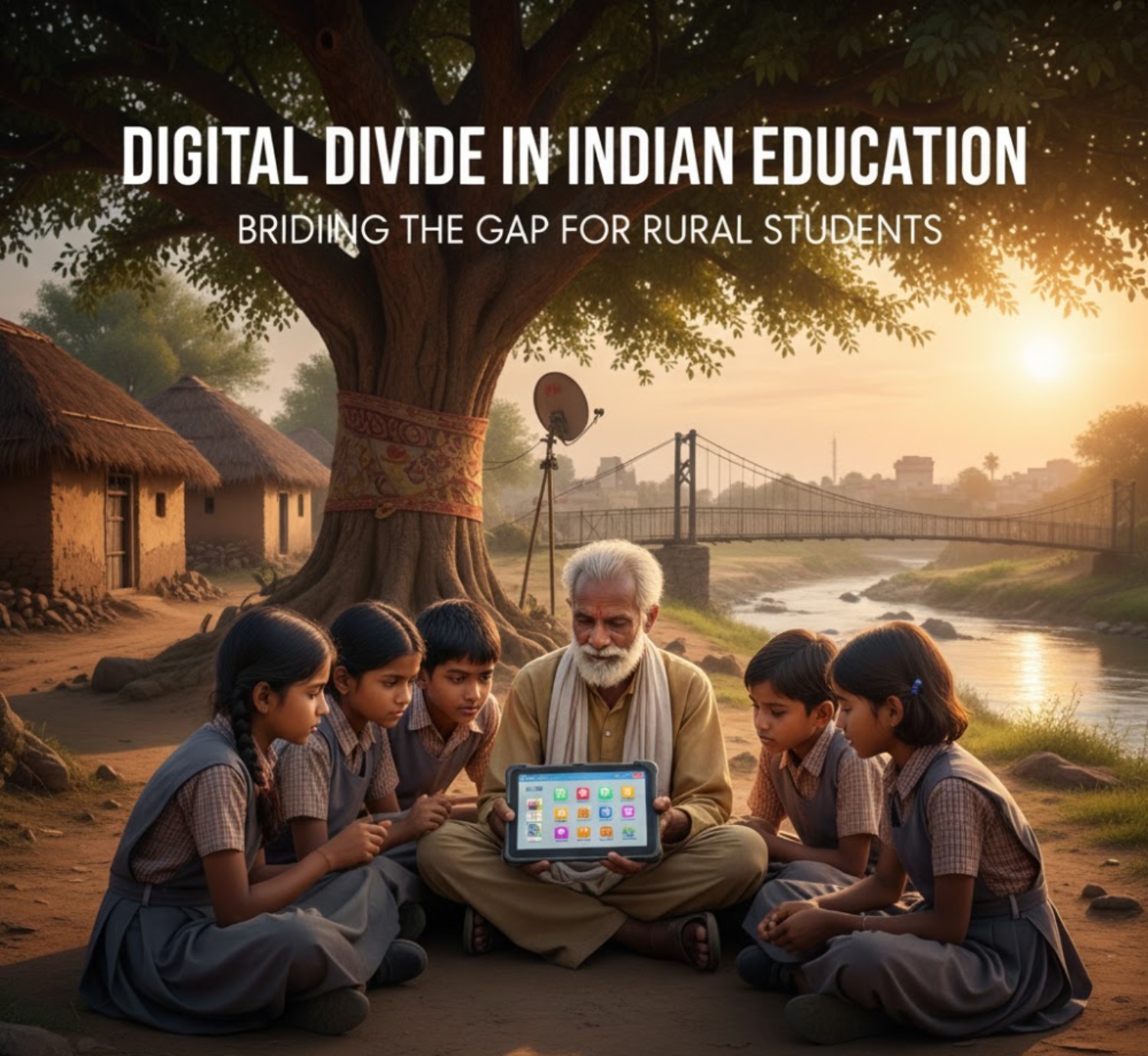India’s rapid digital transformation has revolutionized urban education, but the digital divide in India education remains a critical challenge. While urban students access high-speed internet and smart devices effortlessly, millions of rural students face severe technology access barriers. This educational technology gap—spanning internet connectivity in rural schools, device availability, and digital literacy—threatens to undermine educational equality.
The COVID-19 pandemic exposed this divide dramatically. As online learning became essential, rural students’ technology access proved inadequate, leaving millions behind. Addressing online learning challenges in India requires urgent, comprehensive solutions to bridge the gap between villages and cities, ensuring every child can participate in digital education regardless of location
Understanding the Digital Divide in Education
The digital divide in Indian education is the difference between students with and without access to technology. The digital divide is not just limited to devices and the internet, but includes everything.
According to the National Sample Survey (2023), while 96% of urban households have access to at least one digital device, only 54% of rural households do. The educational technology gap becomes even more pronounced when examining high-speed internet access—available to 85% of urban schools but merely 25% of rural schools
- Quality content is available for all.
- Teachers are trained to use digital tools
- Infrastructure and electricity: Reliable power
- The affordability of smartphones, laptops or tablets
Online classes are routine for urban families. For rural children, watching even a single educational film can be difficult. This imbalance exacerbates social inequality.
Addressing these multifaceted issues requires understanding how internet connectivity in rural schools, rural students’ technology access, and the broader educational technology gap intersect to create online learning challenges in India
Digital Divide: Urban vs Rural Students
This comparison highlights the significant educational technology gap and explains why access to technology for rural students remains a critical policy priority.
Factor | Urban Students | Rural Students |
Internet Access | 70%+ households with broadband | 35-40% households with any internet |
Device Availability | Personal smartphones/laptops common | One device shared by family |
School Infrastructure | High-speed internet connectivity | Poor or no internet connectivity in rural schools |
Teacher Training | 65% digitally proficient | 30% digitally proficient |
Learning Continuity | Minimal disruption during online shifts | Severe online learning challenges in India |
Digital Literacy | High exposure from early age | Limited educational technology gap understanding |
Rural Students' Technology Access Challenges
Rural students’ access to technology is often determined by their environment. In many villages, a smartphone is shared by multiple children within a family. Many homes lack stable electricity, making charging devices difficult. Another barrier is affordability.
In 2023, a survey found that only 28 per cent of rural households were online. This is a stark contrast to urban households, where 70 percent have constant digital access. Rural learners are at risk of being left behind by today’s digitally-driven education system if they don’t get help.
Improving rural students’ technology access is fundamental to closing the digital divide in India education and ensuring equitable learning opportunities
Online Learning Challenges in India
Online platforms have brought about flexibility, but they have also revealed gaps. Some of the key online learning challenges in India include
- Poor internet connectivity in rural schools
- The lack of affordable devices
- Teachers are not adequately trained to use digital tools
- Language barriers in digital content
- No dedicated study space at home can lead to distractions
Rural students may also feel less confident than their urban counterparts.These online learning challenges in India disproportionately affect rural areas where the educational technology gap is widest
The Educational Technology Gap Explained
The education technology gap does not only concern hardware. It is a reflection of inequality in digital literacy, exposure and skills. A rural student may struggle to connect to a video conference due to poor connectivity.
This imbalance impacts future employment and opportunities. Closing the digital divide in India education is not just about being fair, but also about preparing students for the digital economy.
Internet Connectivity in Rural Schools
Internet connectivity in rural schools is a major roadblock. UNESCO reports that inadequate internet connectivity in rural schools affects approximately 70 million students across India. Average internet speeds in rural areas (5-10 Mbps) are insufficient for video-based learning, compared to urban areas (50-100 Mbps) Some schools and villages operate without any digital infrastructure or reliable networks. The Internet is slow, expensive, and unstable, even when it is available.
Schools cannot effectively adopt eLearning platforms without strong connectivity. Teachers face similar challenges when downloading resources, holding live classes or accessing digital initiatives led by the government. Rural education will continue to be behind until connectivity is stable and affordable.
Initiatives to Bridge the Gap
Government data shows that PM eVIDYA has reached over 25 million students since 2020, demonstrating how targeted programs can improve rural students’ technology access. However, only 40% of intended beneficiaries have consistent access, highlighting ongoing online learning challenges in India. There are several solutions to close the gap
- Government programs: Initiatives such as PM eVidya (Digital India) and Digital India are aimed at expanding digital learning.
- Low Cost Devices : NGOs, startups and other organizations are developing affordable tablets that come pre-loaded with educational material.
- Community Learning Centers : Shared hubs and devices with internet allow multiple students to work together.
- Teacher Education: Equipping teachers in rural areas with digital skills will help them better guide their students.
Platforms such as Vidyalaya.org support digital education ecosystems through school management and learning tools that are more accessible.
The Role of Teachers and Parents
Teachers trained to work within connectivity constraints can creatively address online learning challenges in India even when internet connectivity in rural schools remains limited
The issue cannot be solved by technology alone. Teachers are key to closing the educational technology gap. It is easier to adopt digital tools and blended-learning methods if they are trained. Even parents with little digital expertise can encourage students to use the tools they have.
Solutions become sustainable when communities actively participate. Shared community Wi-Fi networks and group study setups, for example, can reduce the burden placed on families
Practical Solutions for Rural Students
Practical steps can be taken to overcome online learning challenges in India .
- Public-private partnerships can help improve internet connectivity in rural schools.
- Solar-powered digital laboratories in regions with limited electricity.
- Create localized content for better understanding.
- Encourage hybrid learning – using offline materials such as radio, TV and printed guides along with digital content.
- Assuring affordability by leveraging government subsidies and CSR driven device distribution.
Implementing these solutions simultaneously can dramatically improve rural students’ technology access and reduce the educational technology gap within 3-5 years
Practical Solutions for Rural Students
The future of Indian education depends on the speed at which the digital divide in Indian education can be closed. Inequality will increase if urban and rural students are separated. The future is bright with a strong policy, accessible technology, and local participation.
Education cannot be a privilege that is only available to those who have internet access. It is our goal to make digital education a tool for empowerment, regardless of where a child lives. Vidyalaya.org and other organizations like it demonstrate how innovative educational models are able to create real change in different regions.
Frequently Asked Questions
1. What is the main cause of the digital divide in India education?
Uneven access to internet and devices is the main reason. While rural areas lack resources, connectivity to the internet in rural schools can be poor. This creates gaps in learning.
2. How does the educational technology gap affect rural students?
This reduces the opportunities for students to develop skills, decreases their confidence, and makes them less competitive. The rural students’ technology access has a direct impact on their academic and career development.
3. What are the biggest challenges to online learning in India?
These challenges include the cost, a lack of qualified teachers and unreliable connectivity. These online learning challenges in India leave rural students behind.
4.How can the digital divide in education be reduced?
The educational technology gap can be reduced by investing in digital infrastructure, educating teachers and providing devices at low cost. Collaboration between the government, NGOs, and communities is essential.

